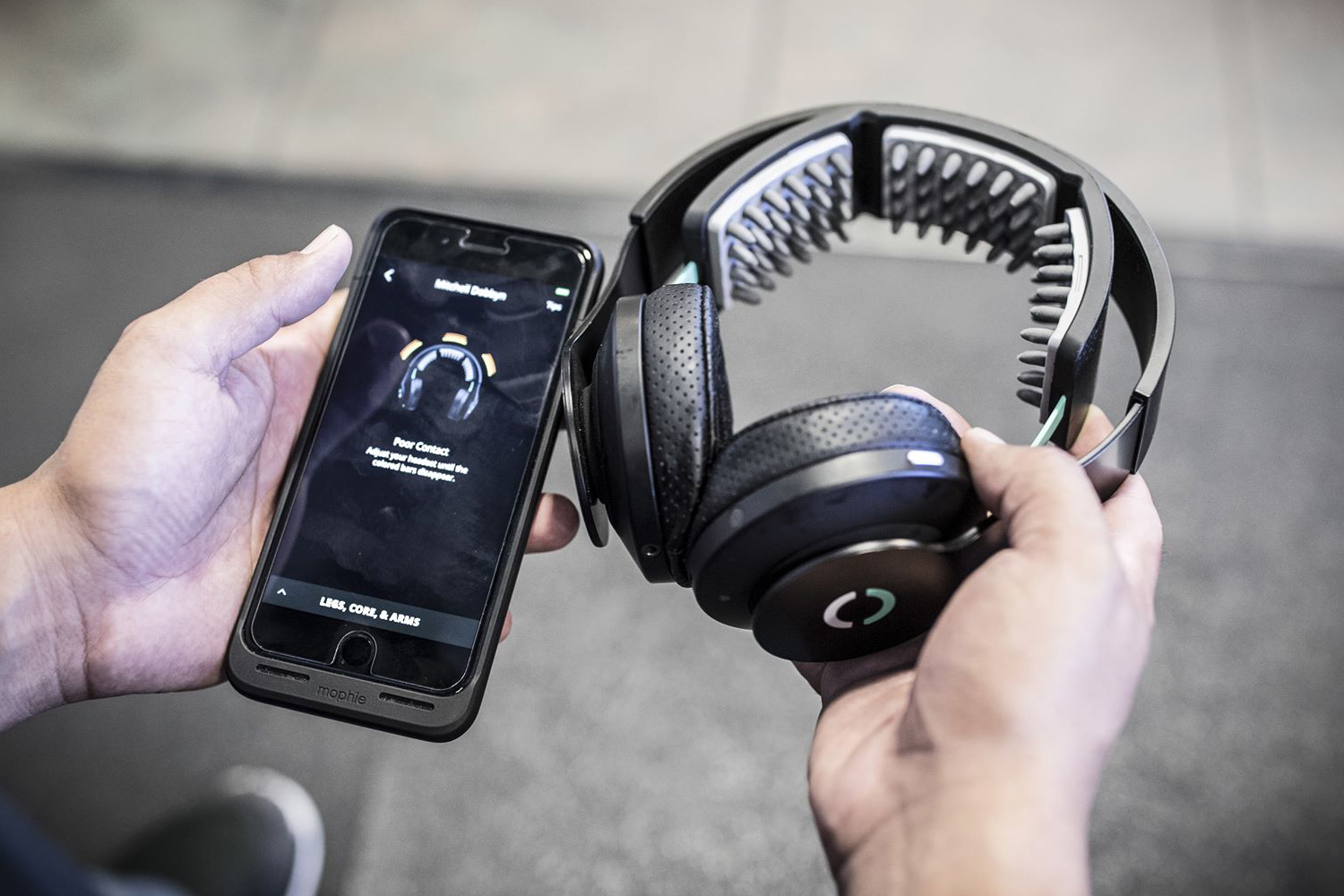Seeing elite cyclists training & warming up pre-race with big over-the-ear headphones got us wondering what was going on. Looking to USA Cycling at least, they aren’t regular headphones, but the neuro-stimulating Halo Sport headset that promise improved training efficiency, greater endurance, and even increased power output. How does it work, or is it just in the riders heads?
Halo Sport headset – muscle movement brain stimulation
Halo Neuroscience – the company behind this neuro-stimulator headset – claims that what the device does is essentially add extra stimulation to your motor cortex during training to improve the brain’s plasticity (its flexibility to react). The technical term for beaming a mild electric current into your brain is “transcranial direct current stimulation (tDCS)”.
That is said to help your brain more efficiently control repetitive & precise muscle movement, reacting more quickly with less effort for claims of improving power, endurance, and muscle precision.
USA Cycling National Team partnership with Halo Neuroscience
While to the sceptic that may sound like psuedo science, or at last something that can’t actually be quantified (there does seem to be a wealth of peer-reviewed scientific literature supporting the concept), the idea of ‘neuropriming’ during training seems to be enough of a draw to convince USA Cycling.
Across all USA Cycling disciplines including BMX, CX, MTB, road & track, national team athletes have begun using the Halo Sport headsets in training, even getting a primer on the neuroscience itself and working to further scientific research on performance.
Halo says that the neuropriming training shows improvements are just about 10 stimulated training sessions (~2 weeks in). Specifically, USA Cycling athletes Tayler Wiles, Andrew Talansky & coach Greg Henderson are said to have already seen benefits in both endurance & technique with the brain stimulators.
Tech Details
The Halo Sport device itself consists of a headset with series of three gray primers pads made up of a grid of foam spikes that provide contact with the head. Inside the headset is a rechargeable battery pack, the stimulation electronics, and the wireless communication hardware to manage their operation via their smart phone app. The headset also includes speakers and a standard mini jack to connect the Halo Sport to a music player to listen to tunes while you train, or there is an optional Bluetooth adapter for wireless musical accompaniment.
Pricing & Availability
While Halo don’t necessarily claim to improve performance – just to improve the effectiveness of your training – all those extra gains don’t come cheap. A full setup is said to retail for $788, although an early adopter discount currently brings that down to ~$500, with devices shipping now.
The National Team partnership is also set to benefit regular members of USA Cycling as well, who will get an exclusive 15% partnership discount on Halo Sport setups, accessible from your membership page at: USAcycling.org




